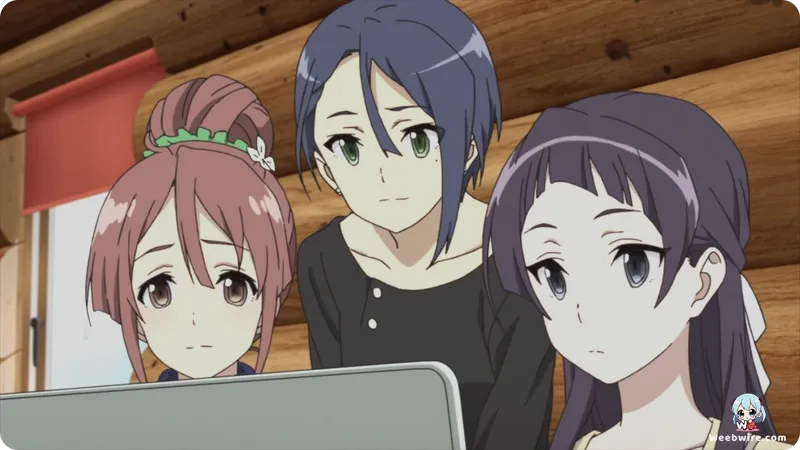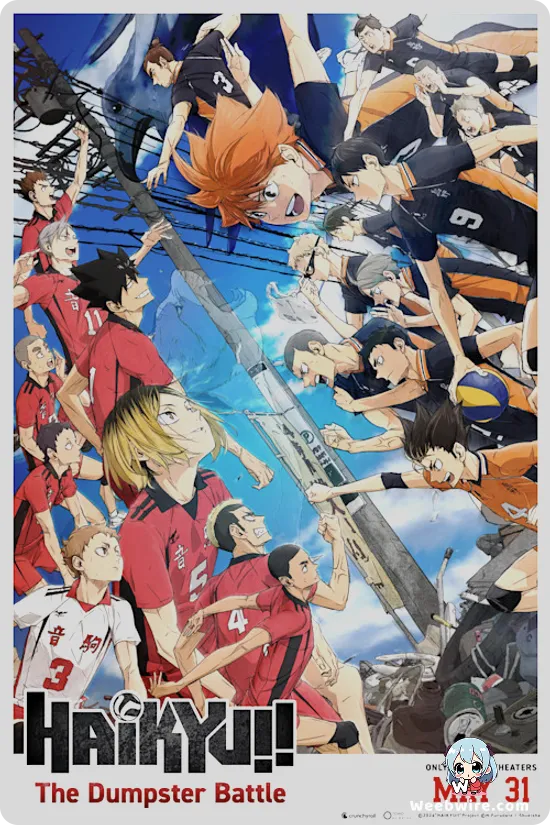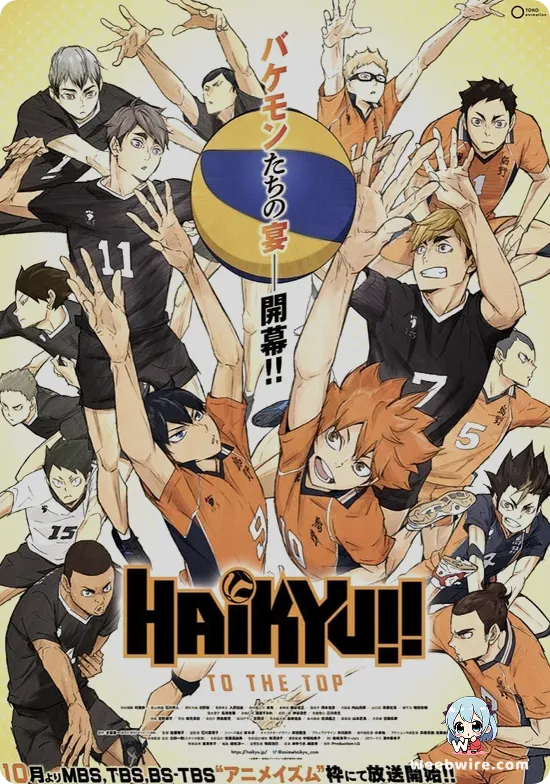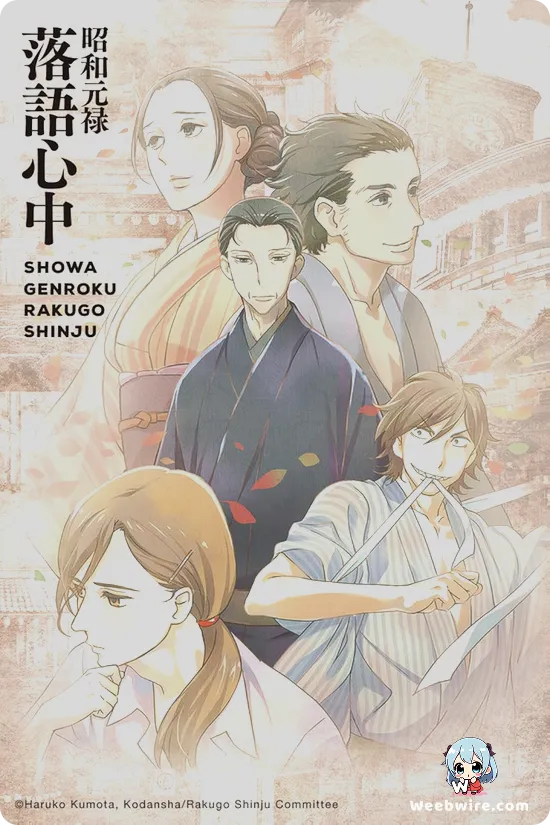P.A.WORKS' 'Sakura Quest' Shines: A Deep Dive into Rural Revitalization and Enduring Appeal

Since its debut in April 2017, P.A.WORKS' original anime series, 'Sakura Quest,' has captivated viewers with its unique fusion of slice-of-life appeal, comedic flair, and a remarkably insightful exploration of rural revitalization. More than just a heartwarming narrative, 'Sakura Quest' courageously confronts the intricate challenges confronting Japan's aging rural populations, all seen through the compelling journeys of five young women dedicated to injecting renewed vitality into the struggling town of Manoyama. While the central storyline of a city girl unexpectedly crowned 'queen' of a rural community is well-known, a closer look reveals numerous fascinating facets and often-overlooked details that underscore the series' profound depth and P.A.WORKS' signature meticulous storytelling.
'Sakura Quest' and P.A.WORKS' 'Work Series'
A pivotal, yet sometimes underappreciated, aspect of 'Sakura Quest' is its esteemed position within P.A.WORKS' acclaimed 'Work Series.' This informally recognized collection of anime masterpieces includes 'Hanasaku Iroha' (2011), which delved into the intricacies of the hospitality sector, and 'Shirobako' (2014), offering an unparalleled peek into the anime production landscape. 'Sakura Quest' masterfully upholds this thematic legacy, spotlighting young women embarking on careers in specific industries and navigating both professional and personal hurdles. Its distinctiveness lies in its sharp focus on local governance and tourism, directly addressing the critical issues of rural depopulation and economic decline. This dedication to portraying diverse aspects of the contemporary Japanese workforce, especially through the eyes of its resilient female leads, epitomizes P.A.WORKS' unique narrative style, imbuing 'Sakura Quest' with a grounded, highly relatable resonance for audiences reflecting on their own career trajectories and societal impact.

Authenticity in Manoyama's Setting
The profound authenticity embedded within the fictional town of Manoyama stands as another captivating element. This setting draws heavily from actual locations within Toyama Prefecture, most notably Nanto City, home to P.A.WORKS' own studio. This intimate connection to its regional roots is far from a mere aesthetic choice; it deeply informs the anime's visual splendor, its rich cultural allusions, and even the precise challenges depicted in the narrative. From the distinctive architectural styles and vibrant local festivals to specific regional dialects and unique agricultural produce, 'Sakura Quest' unfolds as a heartfelt homage to the understated beauty and formidable struggles of rural Japan. The studio's conscious decision to leverage its local environment imbues the series with an unparalleled sense of realism, transforming Manoyama into a vivid, palpable place rather than a conventional anime backdrop. Such meticulous attention to detail enables the series to genuinely explore the intricacies of local tourism, preserve traditional crafts, and celebrate the often-unseen allure of Japan's countryside, offering viewers an intimate window into a facet of the nation seldom portrayed with such profound care.
Exploring Social Themes
Beyond its inherently charming premise, 'Sakura Quest' boldly confronts significant social themes that transcend the usual boundaries of slice-of-life storytelling. The anime masterfully examines the friction between long-standing traditions and modern advancements, the widening generational divide in societal values, and the arduous endeavors of small towns striving to attract youthful talent while safeguarding their cherished heritage. Yoshino Koharu's initial reluctance to embrace her unexpected role as Manoyama's 'Queen,' driven by her own unfulfilled urban dreams, poignantly mirrors the wider societal trend of young individuals gravitating towards metropolitan centers. The series unflinchingly portrays the challenges of instituting change within a conservative community, the skepticism from established residents, and the immense dedication vital for economic revitalization. These compelling explorations lend 'Sakura Quest' substantial thematic gravity, compelling audiences to reflect on the profound importance of community, local identity, and the often-unseen heroism inherent in preserving cultural legacies.
Rich Character Development
Equally compelling is the rich character development woven throughout 'Sakura Quest.' While Yoshino's personal evolution forms the narrative's core, the series dedicates ample focus to intricately crafting the four other principal characters: Shiori Shinomiya, Maki Midorikawa, Ririko Oribe, and Sanae Kōzuki. Each woman contributes a unique personality, background, and skill set to the Manoyama Tourism Board, forging a vibrant and frequently amusing ensemble. Shiori, the dedicated local; Maki, the aspiring actress facing setbacks; Ririko, the introverted intellectual; and Sanae, the astute tech entrepreneur each embarks on their own path of personal growth, mirroring Manoyama's journey towards renewal. Their individual battles with self-doubt, familial pressures, and career ambiguities are handled with remarkable sensitivity, rendering them profoundly relatable. The anime skillfully illustrates how their varied viewpoints and unified resolve are indispensable to the town's prosperity, powerfully underscoring the strength of collaboration and reciprocal support in attaining shared objectives.
P.A.WORKS' Animation Prowess
From a technical production perspective, 'Sakura Quest' stands as a prime example of P.A.WORKS' celebrated animation prowess. The studio is renowned for its stunning background artistry, which in this particular series breathtakingly renders Manoyama's tranquil landscapes, charming streets, and lively festivals. Character designs, originally by BUNBUN and expertly adapted for animation by Kanami Sekiguchi, are both distinctive and inviting, harmonizing flawlessly with the anime's grounded visual style. The evocative musical score by (K)NoW_NAME further amplifies the narrative's emotional contours, featuring a blend of uplifting and poignant melodies that underscore both the adversities and victories encountered by the characters and the town. This scrupulous dedication to visual and auditory fidelity guarantees that 'Sakura Quest' delivers not merely a gripping story, but also an exceptionally rich sensory experience.
In summation, 'Sakura Quest' serves as a powerful testament to P.A.WORKS' remarkable aptitude for crafting compelling, character-centric narratives that simultaneously address crucial societal concerns. Its profound connection to real-world locales, its place within the distinguished 'Work Series,' its brave examination of rural adversities, and its subtle yet impactful character arcs collectively ensure its lasting allure. For discerning viewers who seek anime offering more than mere diversion those desiring thoughtful insights into modern existence and the resilience of the human spirit 'Sakura Quest' undeniably remains an exceptionally enriching and surprisingly profound viewing journey.
Credits
Sakura Quest
Author
Alexandre S.D. Celibidache
Cover Art
BUNBUN
Studio
P.A.WORKS
Publisher
Kadokawa
Producers





